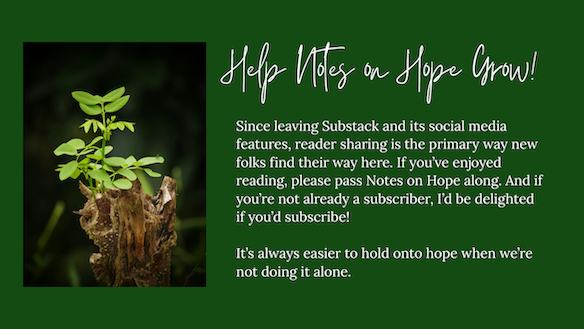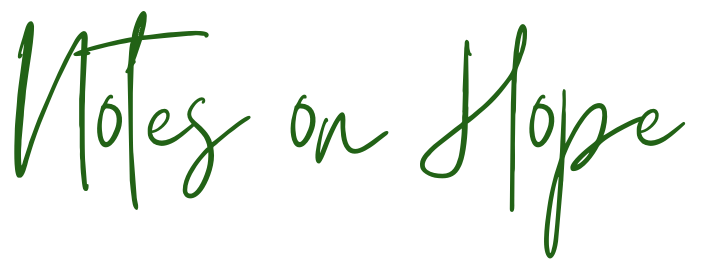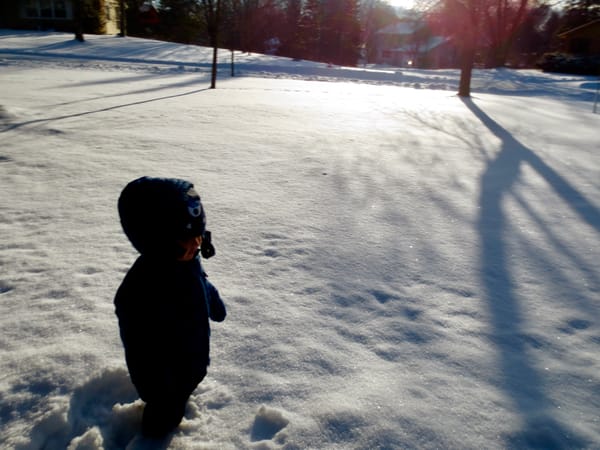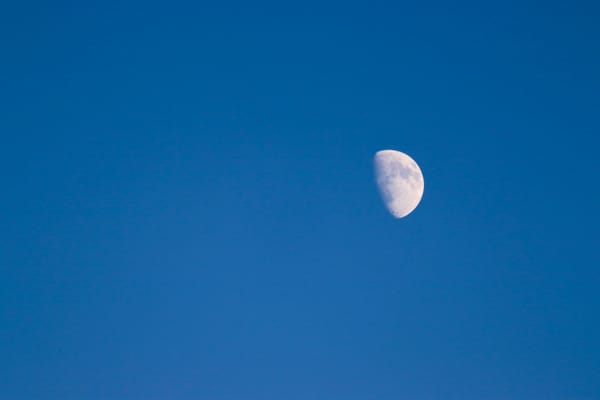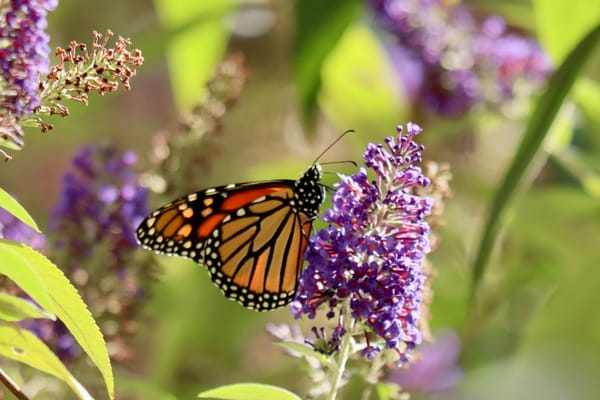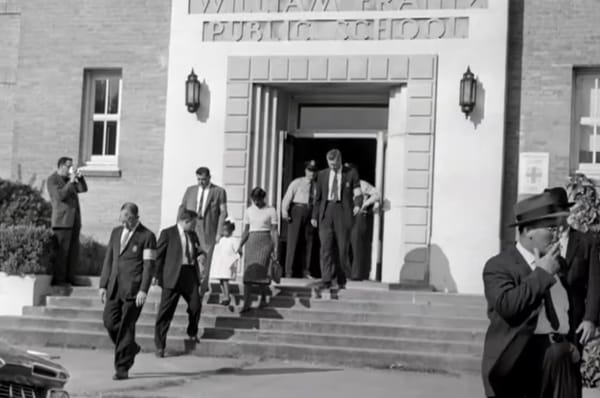Have Some Whimsy!
The power in going big with your most playful impulses
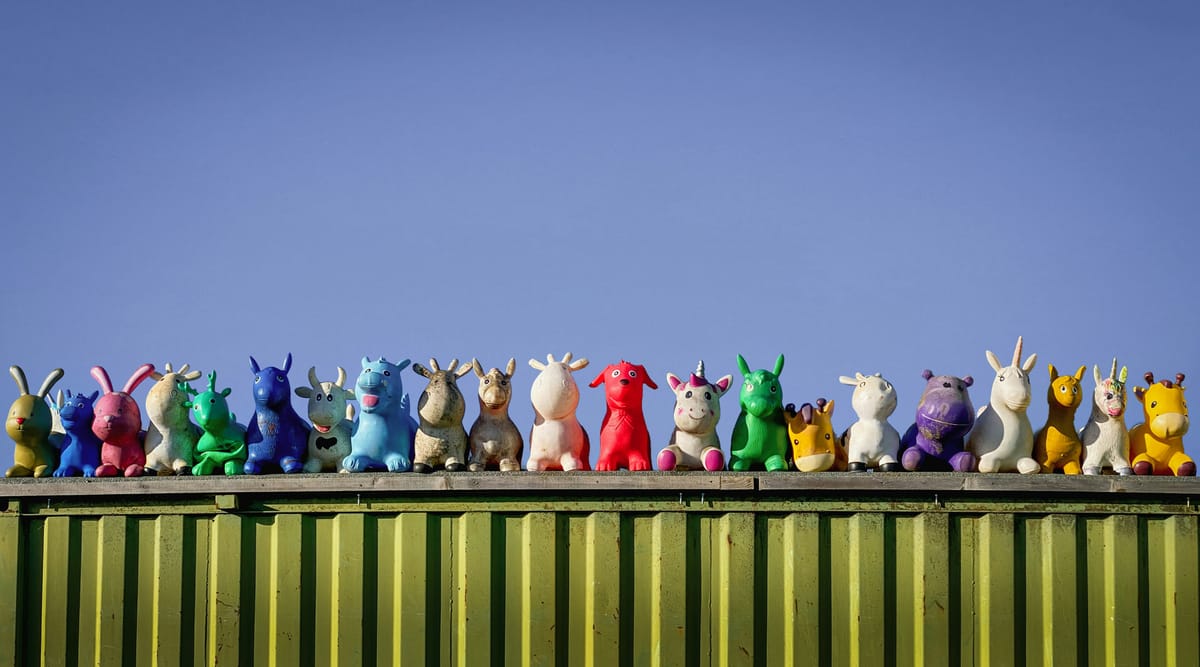
“You gathered acorns in the park in autumn
and leaves eddied over the earth's scars.
Praise the mutilated world
and the gray feather a thrush lost,
and the gentle light that strays and vanishes
and returns.”
~Adam Zagajewski
I read an article this week about the closing of a park in New Jersey that showcases life-size, animatronic dinosaur sculptures. The park, Field Station: Dinosaurs, is selling its giant creatures. My first thought was amusement at the possible conversation that might ensue when one’s spouse brings home an enormous new lawn decoration. But, reader, I have to admit, the more I thought about those giant dinosaurs, the more I started to delight in the idea. To be clear, I live in the city and there is no universe in which I could rehome a giant dinosaur, even one that would not expect to be fed Jurassic Park style. And yet, I found myself brainstorming! Was there a local playground that could take one? Or a camp? Did I know anyone with the necessary yard space, who would be open to becoming a neighborhood attraction?
This is an absurd thing to contemplate. But what I started to realize the more I considered it is that the absurdity is the point. I sent a screenshot of the dinosaur sale images to a friend, who replied with a picture of a local yard displaying a scene of wild animal sculptures, not quite as huge as the suburban dinosaur park, but still notably prominent and similarly silly and unexpected. I thought about the fact that their neighbors probably find this display kind of ridiculous. They might even be annoyed or angered by it—the conformity inducing power of homeowners association rules and all that. Nonetheless, I bet every child and a good number of adults smile whenever they walk by those animals. I bet the kids linger when they pass and probably run over to pet the giraffe or the elephant. I bet they bring their friends to see.
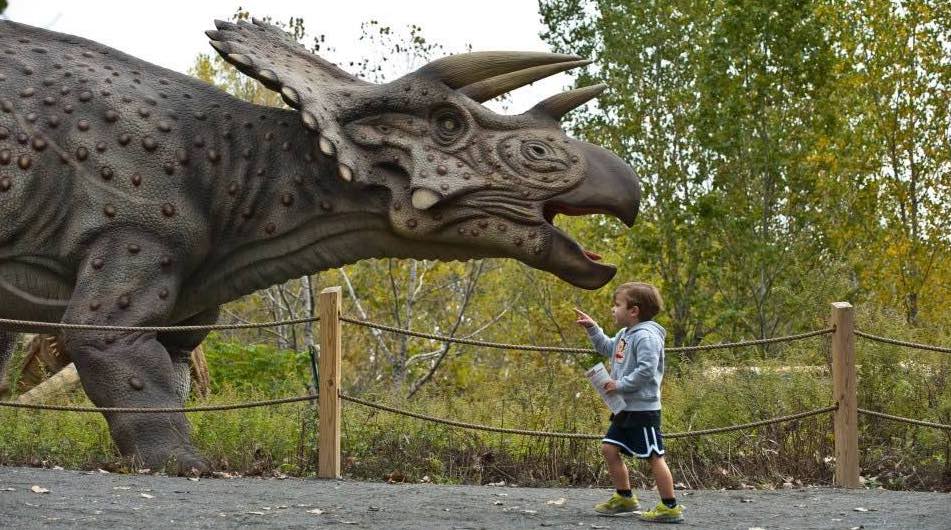
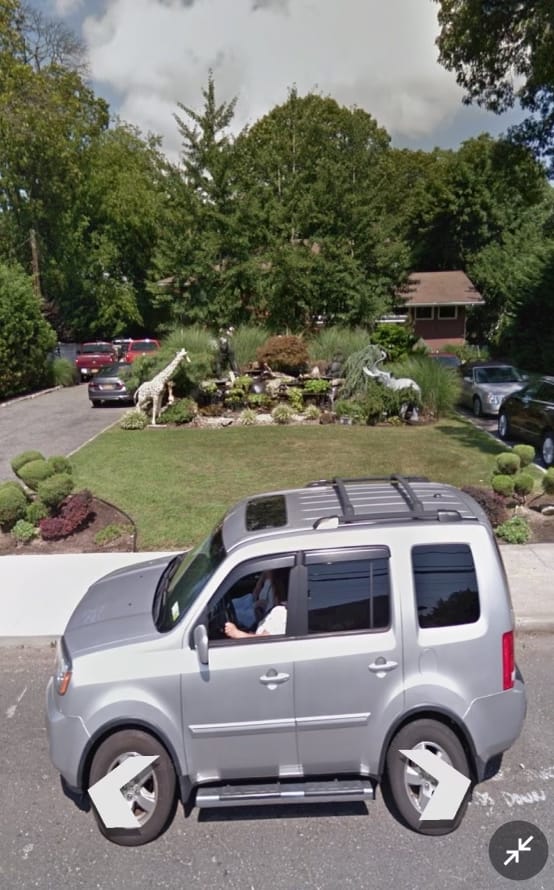
A child with a triceratops at Field Station: Dinosaurs. And a wild animal yard display.
I began to think about the value in wildly creative and even silly or absurd public gestures, executed boldly, just for the sake of offering moments of surprise and delight. In our often dark and fraught times, it would be so easy to write such gestures off as frivolous. But I actually think we might need this kind of public delight now more than ever, and isn’t that what the giant dinosaurs and the wild animal montage offer? I mentioned this idea to my teenage son, and he smiled and exclaimed, “Have some whimsy!”
Yes. That’s it. There is a benefit to whimsy, especially whimsy that dares to be large and public.
I started to recall other similar gestures. I remembered that the children’s author, illustrator, and former architect, Deborah Freedman, lives in a house that is an exuberant palette of abstract colors and shapes. I thought of a recent social media post I saw in which someone had painted the outside of their house black and then covered it in starry constellations. Sadly, I couldn't find that particular post again. But searching led me to the amazing “Night House”, which was part of a public art installation by artist, Kate McQuillen, and is covered in constellations that blend into the night sky. I thought of the outlandish Christmas light displays that are a staple of December life in Dyker Heights Brooklyn, or the various Halloween dog costume parades that will take place soon around the city—proof that you don’t need to own your own home to be publicly whimsical.
There were two themes running through all of the examples that came to mind. They were all joyful and silly and they were all public, offering the smile and the little physical rush of glee that such gestures provide to others, so the feeling multiplies.
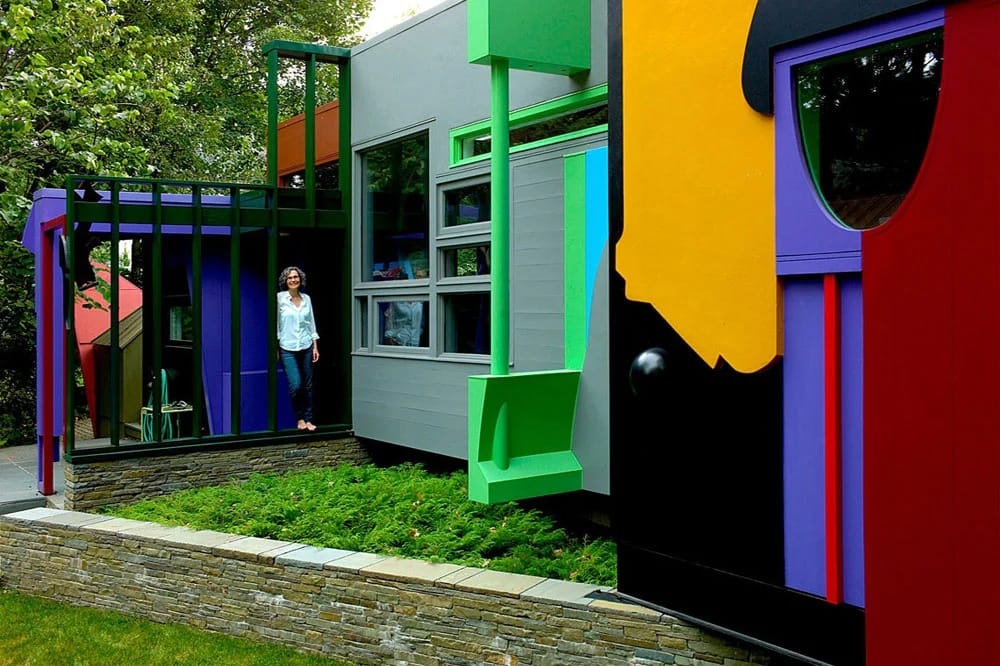

Picture book author, Deborah Freedman's colorful house. And the "Night House" installation by Kate McQuillen.
Many legitimately serious and terrifying things are happening right now, so it would be easy to presume that gestures of pure creativity and levity like this are nonessential at best, and that they might even be—that deadliest of traits—distracting (shudder). Of course, we need serious responses to serious threats. We need to be able to state difficult truths clearly and take real risks, even when the possible outcomes are scary.
I talk a lot in these notes about the stakes of our present reality and about the significance of taking our responsibilities within that reality seriously. In particular, I’ve written about the importance of resisting the notion that childhood should be entirely sheltered from difficult truths and difficult emotions. So I would never argue that we should just throw up our hands and give in to a life lived solely for pleasure. Hedonism is too susceptible to selfishness, and it leaves us too likely to miss out on any deeper purpose or to give up on the potential for progress.
However, I also think that moments of shared pleasure and delight can be sources of both individual and collective wellness in difficult times, and that making delight bold and public serves many essential, larger goals.
First, much of what is profoundly frightening about our present reality, particularly for those who are most vulnerable, is that we are living through a massive escalation in the dehumanization of swaths of the population, from trans people to immigrants, people of color, women, children, people with disabilities—the list goes on. While this has bubbled up from long-standing historical wells of prejudice and power, the scale and effectiveness we are seeing at this moment in time is growing with frightening force and speed. Insisting on delight and sharing our delights with others is more vital in such times not less, because delight and play—the key ingredients for whimsy—are humanizing. They push back viscerally on the notion that pleasure and self-expression are privileges for the few. When we are bold enough to be publicly whimsical, we reassert our humanity and we invite others to share in that humanity. The poet, comedian, and performer, Alok, provides a vivid example of the power of publicly sharing whimsy as a way to reassert humanity and dignity on an individual and a collective level.
When playfulness, which is inherent in whimsy, is big enough and public enough it has the power to invite others in—even those we don’t know and might not expect to engage. This invitation can reorient individual priorities and strengthen community connections. Whimsy isn’t simply delight or pleasure. It’s a very specific form of delight that is marked by a childlike sensation of imaginativeness and experimentation. This is a key feature of the giant dinosaurs and of the other examples I mentioned. They aren’t just delightful. They are, more specifically, the kind of delightful prompts that draw a child’s attention. In doing so, they remind us of our own childlike capacity for pleasure and fun and, most importantly, they remind us to value childhood and children themselves in an environment in which children are among those most at risk. Additionally, play has been shown to increase community connection and trust among children and adults alike. So, finding ways to amplify and share in playful experiences creates a kind of community glue.
This brings me to another value of whimsy, and perhaps the most salient defense of its worth in serious and threatening times. Whimsy can actually be a vital tactic of peaceful resistance. When obviously threatening and dangerous power meets demonstrably ridiculous playfulness, the contrast is striking. Whimsy can reveal a disproportionate show of force for what it is more quickly and readily than most other strategies. An example just this week can be seen in a group in the supposedly war-ravaged Portland that dangled donuts on fishing poles while forming a line of defense against armed agents. This was ridiculous, and silly and, in being so, the gesture made it impossible to deny who the aggressors in the situation were. Remember, it was a child in the story, after all, who announced that the emperor had no clothes. If you’re not convinced that this is a serious and viable strategy, you can read all about resistance through playful absurdity here.
Whimsy sparks a very particular kind of playful, childlike joy. Whimsy made big and bold and public can infuse this feeling throughout communities. It can remind us of our own creativity and humanity and reassert that humanity for others. Public whimsy can reignite our own feeling of childlike wonder and play, and it can remind us to keep actual children at the center of our priorities. The surprise of encountering bold gestures of whimsy can remind us what it is we are trying to protect—our right and the rights of others to not only live, but to pursue happiness. Shared whimsy fosters community and weaves the fabric of our collective commitment to one another. And, when channeled strategically, defiantly public whimsy can even change the course of history.
So, where do you find whimsy in your life, even in these most serious times? How do you remind yourself not to give in to cowering fear and to instead embrace the colorful, variable, quirkiness of human delight and play? Most importantly, how might you invite others into shared whimsy?
I, for one, am currently gathering bats, ravens, and a cohort of friendly skeletons. I happen to live on one of the blocks in New York City that transforms into a destination block party on Halloween. The weeks leading up to Halloween always become a collective community effort, as my neighbors gather on their stoops and along the sidewalk draping cotton spiderwebs, carving pumpkins with children, and carefully positioning ghosts. Some blocks go all in on the fear factor, but ours tends to lean more into silliness. Last year, I passed a child who literally squealed with delight when they got to the corner of our block.
I find an extra layer of motivation in the way this public collaboration takes shape in the city, because most of us don’t own the buildings we decorate each year, and it’s often harder to engage in organizing a feeling of neighborhood community connection when we’re all stacked on top of each other in apartments, not calling to our neighbors across yards. Community building and shared pleasure takes a little more work in the city, as well as a release of the sense that we can only bring joy and delight to spaces that we own and preside over individually. But the connection and delight that, not only the actual Halloween party, but the weeks of preparation, bring each year is palpable. It won’t change the world all at once, but it will remind us, for a few weeks, of our interdependence. And it will remind us of the sound of children’s laughter. As the organizer and writer, Garrett Bucks, is often reminding readers, these are not small things. Or, rather, if they are small, they are small things that add up to be big and powerful.
So that’s my most concrete and immediate plan for shared, public whimsy. I wonder what yours is? Let’s all look for these opportunities, prod ourselves not to repress them out of a desire to fit in or to fly under the radar. Let’s protect and celebrate others, who make their most whimsical gestures bold, public invitations. And let’s look for opportunities to channel whimsical practices into real, meaningful change.
Wishing you encounters of whimsy and the creativity and courage to go big with your own playful spirit,
Alicia
A few things I found helpful and hopeful this week…
- The Altadena Community Garden Rebuilds
- The Treacherous Allure of "Polarization" Dogma by the historian, Thomas Zimmer, who has recently moved off Substack (woo hoo!)
- Cecilia Payne-Gaposchkin Changed Our Concept of the Stars
- Tin Can Kids — Bringing back land lines specifically for kids. I'm into it! Reminds me of this essay by Charlotte Clymer on "The Phone."
- Lastly, the Iowa public school superintendent and former Olympian, Ian Roberts, who was detained by ICE this week, understood the power of whimsy, as is evident in this NPR piece where you can see him racing 5th graders while wearing a red plaid suit and a bowtie. Fellow educators referred to him as "a beacon of light." He was also the first person of color to be named to his position. The community, which includes 30,000 children in the schools he oversaw, is rallying for his safe return.
